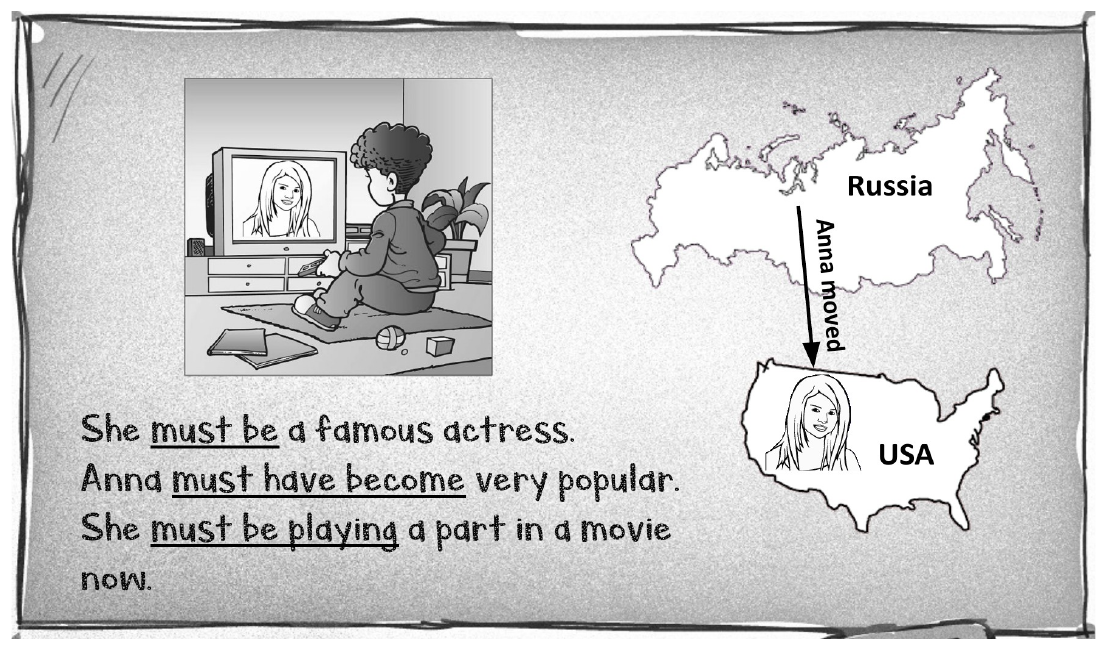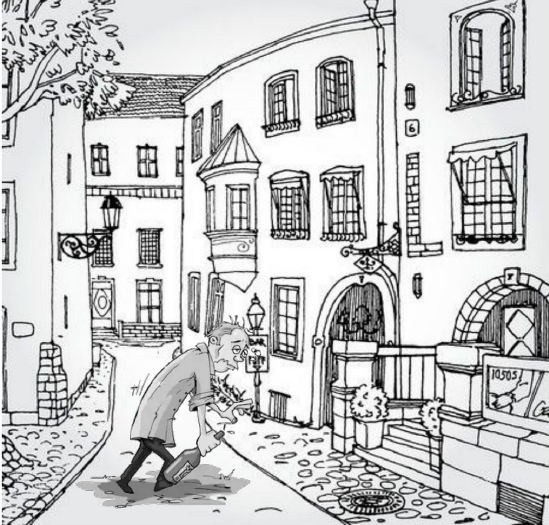Today, we’re diving into an engaging way to teach deduction using modal verbs — specifically must — through a context-building approach. By grounding grammar in a meaningful context, students can better grasp its use in real-life situations. Let’s see how this unfolds!
Grammar presentation 1
Draw maps of the USA and Russia on the board. Draw a picture of yourself watching TV. Tell your students the following story to establish the context:
I live in Russia. My best friend Anna moved to America three years ago. We haven’t seen each other or chatted since then. Suddenly, I saw a familiar face on a TV show, and it occurred to me that it was Anna. So, I made an assumption…

Write down three sentences on the board and model their structures:
S + must + verb (an assumption about the present)
S + must + have + past participle (an assumption about the past)
S + must + be + V-ing (an assumption about the present moment/present period)
Explain that we can use different modal verbs for deduction — guessing if something is true based on the available information. The modal verb we choose reflects how certain we are about the possibility. We use must when we feel sure that something is true or when it's the only realistic possibility. Elicit some other examples from the students.
Grammar presentation 2
Here is another easy-to-create context to explain must for deduction. Draw a man walking along the street and tell the students the following story:
I see a man walking along the street. He is not walking straight. He smells of alcohol, and he is singing a song loudly. What supposition can we make about this man?
The students’ answer might be ‘This man is drunk.’ Correct them for ‘This man must be drunk.’ → a strong supposition which is based on some evidence or knowledge.

If we say This man is drunk, we are 100% sure that it is true. It’s the fact. If we say This man must be drunk, we are 99% sure that it is true. There’s very little chance that it’s not true.
Ask some CCQs to check understanding:
- Do I think the man is drunk? — YES.
- How sure am I? — Very sure. 99% sure.
- Why am I so sure? — We have some evidence: He can`t walk straight. He smells of alcohol. He is singing loudly.
- Am I making a supposition? — YES.
- What should I say if I am 100% sure? — The man is drunk.
When you are done with your explanations, elicit the structure from the students and model it on the board:
S + must + be + (noun, adjective, adjective + noun, verb + -ing)
Give some additional examples (or elicit them from the students) to illustrate the model:
He must be an alcoholic. ( must be + noun)
He must be depressed. (must be + adjective)
He must be an unhappy person. (must be + adjective + noun)
He must be feeling terrible. (must be + verb + -ing)
